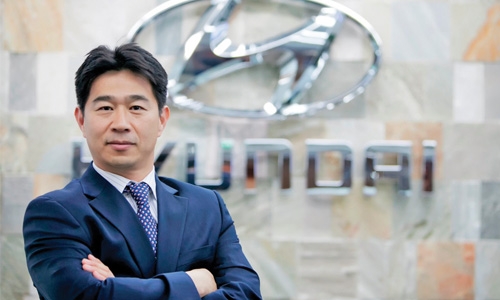Next gen cars revolutionising road safety
Manama : The head of Hyundai in Africa and the Middle East is predicting a revolution in car safety in the next five years, as a wave of mass-market models that can predict and automatically respond to danger arrives in showrooms.
Today’s new cars already rate highly for protecting drivers and passengers in a collision – what is called ‘passive safety’. Mike Song, the Korean carmaker’s Head of Operations in the region, says we are now entering a new era of ‘active safety’, as carmakers race to offer the best possible collision avoidance technology in forthcoming models.
“There has never seen so much competition to build the safest car,” says Song. “When you think of the basic crash protection equipment – seatbelts, head restraints, crumple zones, airbags and so on – these things arrived very gradually over decades. We are now seeing this level of innovation in the space of five or six years, and new features are moving from the luxury segment into mass-market cars incredibly fast.” Current models already include active safety features such as anti-lock braking systems (ABS) and electronic stability control (ESC) to reduce the risk of the car skidding or spinning in an emergency.
“Many accidents happen because drivers are too slow to react, and that is true even for good, careful drivers,” says Mike Song. Carmakers want to overcome this human factor. At Hyundai alone, the most recent all-new models – the new-generation i30 in Europe and Azera in Korea – combine a package of innovations as ‘Hyundai Smart Sense’, which includes Autonomous Emergency Braking, Lane Keeping Assist, Active Blind Spot Detection, Driver Attention Alert, Advanced Smart Cruise Control and Around View Monitor. Many of the building blocks of Hyundai Smart Sense come from the company’s research and development programme for driverless vehicles. “In its most simple terms, by combining a front-mounted sensor with the ABS and cruise control systems, the car can detect danger and apply the brakes automatically, either stopping or slowing down,” says Song. “Side-mounted sensors can detect when the car is wandering across a white line or there is car next to you, and tell the power steering to keep you in your lane. Because of the way we can connect all these systems, and the processing power now available, the car can see and respond to danger much faster than a human.”
Being able to offer this level of safety is an important selling point, with independent tests such as the NCAP ‘new car assessment programmes’ giving consumers a benchmark for comparing their options and making an informed decision.
“When our engineers develop a new model, one of their targets is to achieve high NCAP scores,” says Mike Song. “We want five stars, and a growing number of customers will make a decision based on whether we achieve that. Then to keep those stars, we need to make sure every new model is better than the car it replaces.” “In five years’ time, a car that doesn’t respond to danger won’t be considered completely safe anymore. To meet that expectation, we need to be bringing the best available technology into the market now.”
Related Posts

